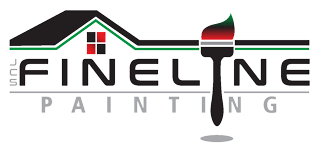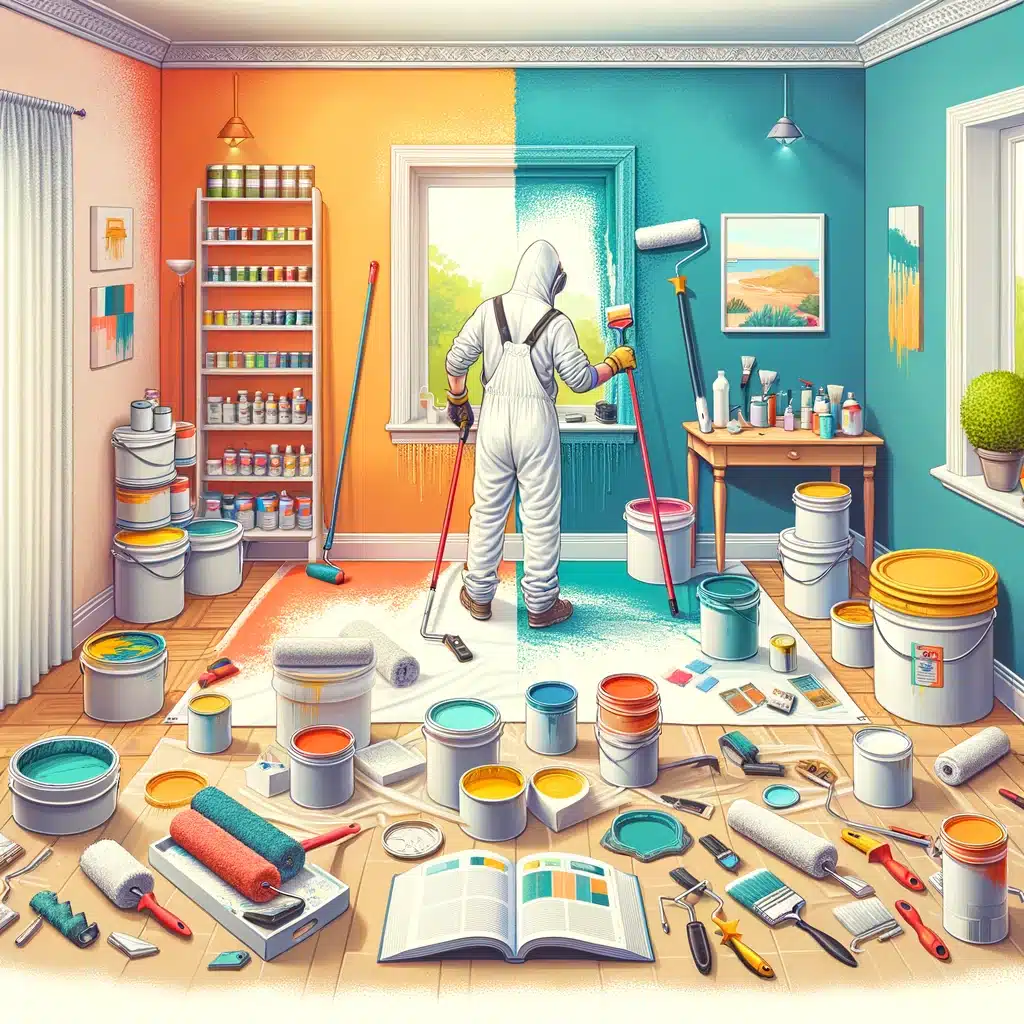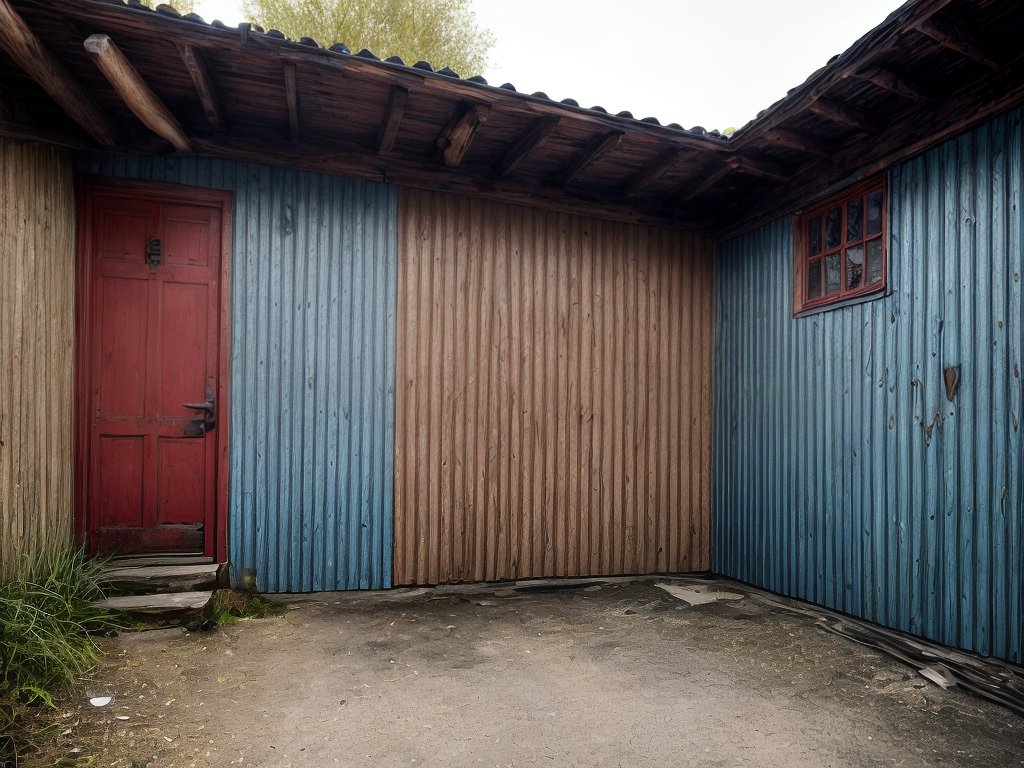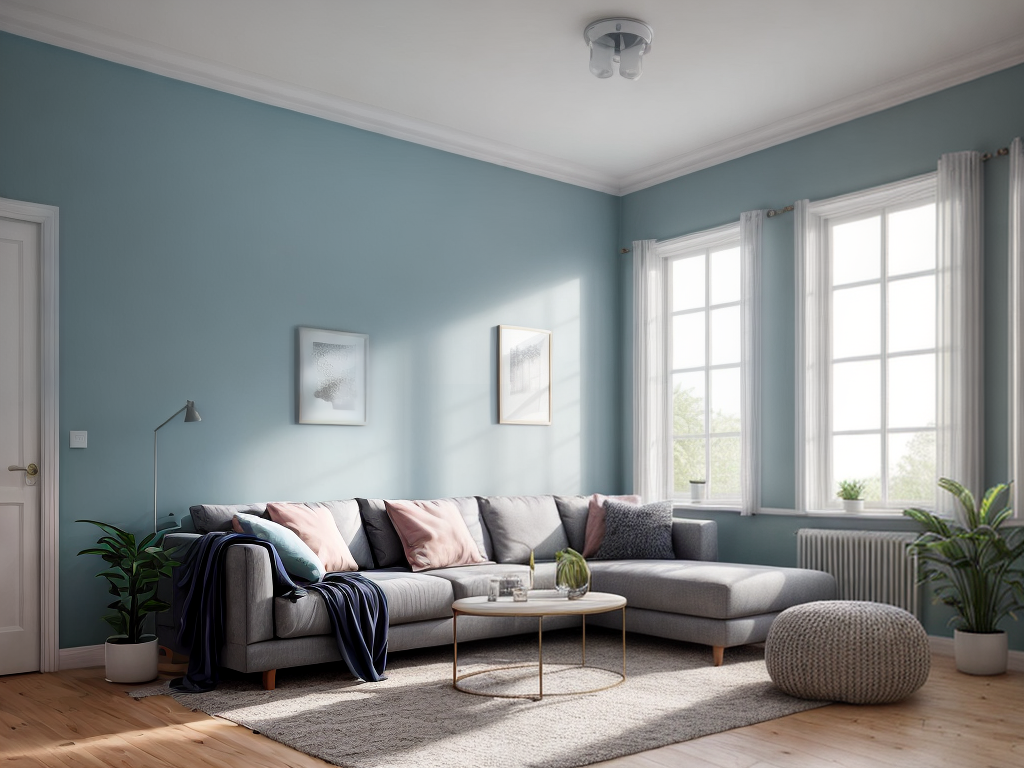Hey there! Did you know that according to a recent study, 70% of homeowners struggle with keeping their painted walls clean and spotless? Well, worry no more! In “Spotless Walls: A Comprehensive Guide to Cleaning Painted Surfaces,” I’ll be your trusty guide to achieving those spotless walls you’ve always dreamed of. From preparing your cleaning supplies to tackling common stains and spots, I’ll provide you with all the tips and tricks you need to maintain the cleanliness of your painted walls. Say goodbye to dust, grease, and stubborn stains, and say hello to a fresh and pristine living space. Let’s dive in and make those walls shine!
Preparing Your Cleaning Supplies
- I usually gather all the necessary cleaning supplies before I start cleaning the painted surfaces. Proper cleaning procedures and techniques are essential to maintain the appearance and longevity of painted walls. To ensure effective cleaning, I begin by assembling the required supplies. I gather a bucket, sponge, soft-bristled brush, mild detergent, and clean microfiber cloths. These tools are specifically chosen to prevent any damage to the painted surface. Next, I mix a small amount of detergent with warm water in the bucket, creating a gentle cleaning solution. I dip the sponge or brush into the solution, wringing out any excess liquid, and then gently scrub the painted surface in a circular motion. Finally, I use a clean microfiber cloth to wipe away any residue. By following these proper cleaning techniques, I am able to maintain spotless and well-maintained painted surfaces.
Assessing the Painted Surface
When it comes to assessing the painted surface, there are three key points to consider. First, it’s important to evaluate the overall condition of the surface to determine if any repairs or touch-ups are needed. Secondly, identifying any stains or discoloration on the surface can help guide your cleaning approach. Lastly, assessing the compatibility of the paint with cleaning products is crucial to avoid damaging the surface. By taking these points into consideration, you can ensure an effective and safe cleaning process for your painted surfaces.
Surface Condition Evaluation
Before assessing the painted surface, I always start by examining its overall condition. This involves evaluating both the paint quality and the surface preparation. When it comes to paint quality, I look for signs of cracking, peeling, or fading. These issues may indicate that the paint is old or of poor quality, which can affect the cleaning process. Additionally, I check for any visible imperfections, such as uneven texture or brush strokes, as these can impact the overall appearance of the surface. In terms of surface preparation, I inspect for any areas where the paint may not have adhered properly. This could be due to inadequate cleaning, lack of primer, or improper application techniques. By thoroughly evaluating the surface condition, I can determine the best approach for cleaning and restoring the painted surface.
Stain Identification Techniques
After evaluating the overall condition of the painted surface, I proceed to employ stain identification techniques to further assess its cleanliness. One important aspect of maintaining painted surfaces is identifying and removing paint stains effectively. To do this, I carefully inspect the surface for any discoloration or marks that may indicate the presence of stains. I use a bright light source and examine the area from different angles to ensure thorough examination. Additionally, I pay close attention to any signs of water damage, such as blistering, bubbling, or peeling paint. Water damage can lead to mold growth or structural issues if left untreated, so it is crucial to identify and address it promptly. By using these stain identification techniques, I can accurately assess the condition of the painted surface and determine the appropriate cleaning methods.
Paint Compatibility Assessment
To assess the compatibility of the painted surface, I start by examining the type and condition of the paint using a thorough inspection. This involves checking for any signs of peeling, cracking, or fading. I also look for any areas where the paint has become discolored or damaged. Additionally, I assess the paint adhesion by performing a simple tape test. This involves applying a piece of tape to the painted surface and gently pulling it off. If the paint comes off easily, it indicates poor adhesion and may require further surface preparation before cleaning. By assessing the paint type, condition, and adhesion, I can determine the best approach for cleaning the painted surface and ensure a spotless result.
Removing Dust and Loose Debris
When it comes to removing dust and loose debris from painted surfaces, there are a few key points to keep in mind. First, having the right cleaning tools is essential. A microfiber cloth or a soft-bristle brush can effectively remove dust without damaging the paint. Additionally, taking preventative measures can help minimize future dust buildup, such as regularly dusting the area and keeping windows and doors closed to reduce the amount of dust entering the space.
Best Cleaning Tools
I prefer using a microfiber cloth to effectively remove dust and loose debris from painted surfaces. Microfiber cloths are great for cleaning because they have tiny fibers that can trap dirt and dust particles. When using a microfiber cloth, I gently wipe the surface in a circular motion to pick up the dust and debris. Another advantage of using a microfiber cloth is that it does not leave behind any lint or residue. It is important to note that when cleaning painted surfaces, it is best to avoid using harsh cleaning solutions as they can damage the paint. Instead, I recommend using a mild cleaning solution, such as a mixture of water and a gentle dish soap, to clean the surface effectively without causing any harm.
Preventing Future Dust Buildup
To minimize future dust buildup and maintain clean painted surfaces, I rely on regular dusting and the use of preventative measures. Dust not only makes surfaces look dirty, but it can also lead to discoloration over time. Therefore, it’s important to take proactive steps to reduce dust accumulation. One effective method is to use microfiber cloths or dusters to regularly wipe down walls, ceilings, and other painted surfaces. These cloths are designed to attract and trap dust particles, preventing them from settling back onto the surfaces. Additionally, incorporating measures to reduce static electricity can help prevent dust from clinging to painted surfaces. This can be done by using an anti-static spray or by placing humidifiers in the room to increase moisture levels. By implementing these preventative measures, you can keep your painted surfaces dust-free and prevent discoloration.
Tackling Common Stains and Spots
To effectively remove common stains and spots from painted surfaces, it is important to use a combination of gentle cleaning solutions and proper techniques. When it comes to removing pet stains, it’s crucial to act quickly. Blot the stain gently with a clean cloth or paper towel to remove as much of the stain as possible. Then, mix a solution of mild dish soap and warm water and apply it to the stain, using a soft sponge or cloth to gently scrub the area. Rinse with clean water and pat dry. When tackling water damage, start by identifying the source of the problem and fixing it. Then, use a mixture of bleach and water to kill any mold or mildew that may have formed. Scrub the affected area gently and rinse thoroughly to ensure all traces of the stain are gone.
Cleaning Grease and Oil Marks
To effectively clean grease and oil marks from painted surfaces, a degreaser solution can be used to break down the stubborn stains. Simply apply the solution directly to the affected area, and let it sit for a few minutes to allow the degreaser to penetrate the grease or oil. Then, using a clean cloth or sponge, gently scrub the area in a circular motion. Rinse the cloth or sponge frequently in clean water to remove any loosened grease or oil. For more stubborn stains, you may need to repeat this process. It’s important to note that while a degreaser can effectively remove grease and oil marks, it may not be suitable for other types of stains, such as removing permanent marker or cleaning nicotine stains. In these cases, it’s best to use specific cleaning products designed for those types of stains.
Dealing With Stubborn or Set-In Stains
When faced with stubborn or set-in stains on painted surfaces, I rely on a combination of specialized cleaning products and techniques to effectively remove them. For tough stains that are deeply embedded in the paint, I start by using a stain-specific cleaner or solvent. These products are designed to break down the stain and make it easier to remove. I apply the cleaner directly to the stain and gently scrub with a soft brush or sponge. If the stain persists, I may need to repeat the process or try a different cleaning product. In some cases, professional cleaning services may be necessary, especially if the stain is particularly stubborn or if multiple attempts to remove it have been unsuccessful.
Avoiding Damage to the Painted Surface
To maintain the integrity of the painted surface, I always take cautionary measures to avoid any potential damage. One of the key steps in preventing chipping is to handle objects with care when in contact with the painted surface. I make sure to use protective padding or cloth when moving furniture or other heavy objects to prevent any scratches or dents that could lead to chipping. Additionally, I avoid using harsh cleaning agents that could cause discoloration or damage the paint. Instead, I opt for mild cleaning solutions and gentle scrubbing techniques to minimize the risk of discoloration. By being mindful of these precautions, I can ensure that my painted surfaces stay in pristine condition for years to come.
Maintaining the Cleanliness of Painted Walls
I use a gentle cleaning solution and microfiber cloth to regularly wipe down my painted walls, ensuring that they stay spotlessly clean. This not only helps maintain the cleanliness of my walls but also extends the longevity of the paint. When it comes to effective cleaning methods, it is important to avoid using harsh chemicals or abrasive materials that could damage the paint. Instead, I opt for a mild detergent mixed with water to create a gentle cleaning solution. The microfiber cloth is soft and non-abrasive, making it ideal for wiping down the walls without causing any scratches or streaks. By regularly cleaning my painted walls with these gentle methods, I can keep them looking fresh and vibrant for years to come.
Conclusion
After following this comprehensive guide, your walls will be spotless and gleaming like never before. Say goodbye to stubborn stains and hello to a fresh and clean painted surface. With just a little effort and the right cleaning supplies, you can transform your walls into a work of art. So go ahead and give your walls the TLC they deserve, and prepare to be amazed by the stunning results!




